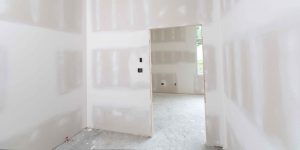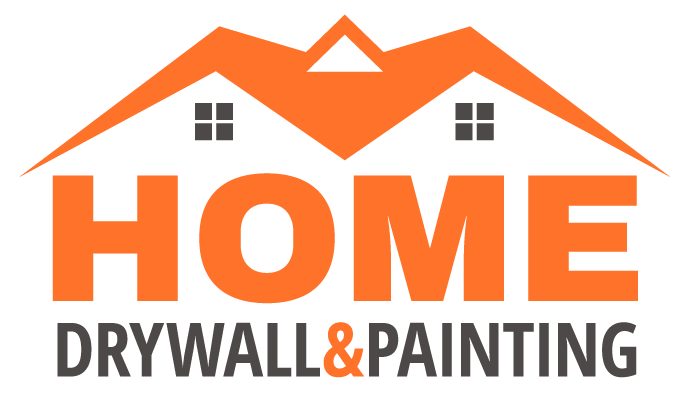 What is drywall texturing? It’s a simple question, but it does lead us to our most basic understanding of what drywall texture is: the process by which you give your walls a textured finish. Whether you’re looking to create a specific look in your home or office or just want to cover up some imperfections on existing walls, applying drywall texture can be an easy solution that works for just about anyone. So let’s take a look at how to get started with this project, plus some common questions people have when they’re thinking about doing their texturing job! Drywall Texturing in Savage MN
What is drywall texturing? It’s a simple question, but it does lead us to our most basic understanding of what drywall texture is: the process by which you give your walls a textured finish. Whether you’re looking to create a specific look in your home or office or just want to cover up some imperfections on existing walls, applying drywall texture can be an easy solution that works for just about anyone. So let’s take a look at how to get started with this project, plus some common questions people have when they’re thinking about doing their texturing job! Drywall Texturing in Savage MN
What is Drywall Texturing?
Drywall texturing is the process of applying textured paint to a wall, ceiling, or another flat surface. The idea behind drywall texturing is that when you apply the texture to your walls, it will create some sort of finish that is desirable. You can choose from many different types of textures such as brick, stone, and even wood grain.
The main reason for applying texture to your walls is for aesthetics and style. Textures add character and interest in any room because it creates an interesting focal point for people who enter it for the first time! Textures make rooms pop with color. This way you can create contrast between colors without actually painting or staining anything else but just by using different techniques like adding waxes and glazes over top of each other until they all blend easily enough so they don’t look too overpowering when viewed together up close.
How to Apply Drywall Texture
You can apply textured paint with a brush or roller. You will need to use a roller for large areas, but a brush is easier for small surfaces.
To apply textured paint with a roller:
- Make sure the surface is clean and dry before you begin to apply the paint. If your walls have been freshly painted, wait until the paint is completely dry before applying textured coatings because these are not designed for fresh coats of paint and might peel off if applied too soon.
- Roll out any ridges in the surface by hand or use an electric sander if necessary (we recommend using one). This will allow easy application of your first coat without leaving any streaks behind—and it also makes any uneven spots less noticeable after you lay on subsequent layers of texture!
- Apply several thin coats following manufacturer instructions until all areas are covered evenly; let each coat dry before applying another one (it’s best not to skip this step!).
Thick vs. Thin Drywall Mud
You’ll need to know the difference between thin and thick drywall mud. It determines the type of texture you’ll get.
Thin mud is used for a knockdown, which is a very smooth, soft finish. This is done with either a knockdown or skip trowel and requires fewer coats of paint than regular texturing. Thick mud is used for orange peel and popcorn removal, which are thicker textures that require more time to dry and are harder to apply but provide a better result once dry than thin mud does.
Skip Trowel Texture
In this process, the drywall is textured using sand. The sand is applied to the wall in a very thick layer and smoothed out. This gives the wall a sandy feel and can help cover up imperfections in drywall or plaster walls.
Skip trowel is the most basic method of texturing, but it’s still an important one because it provides an even texture to your walls that will make painting easier later on.
Orange Peel Texture
Orange peel texture is the most common type of drywall texture. This style creates a pattern that looks similar to an orange peel, with lighter and darker spots throughout.
Orange peel can be applied using several different methods. The easiest way to create this effect is by using a trowel on either side of your hand as if you were spreading butter on toast. However, some people prefer to use a roller or sponge instead of their hands because it’s faster and less messy than using their fingers.
There are two main reasons why orange peel is such a popular texturing technique: firstly, it’s incredibly simple; secondly, it creates very effective coverage over large areas quickly without requiring much skill at all!
Knockdown Texture
Knockdown texture is the easiest, but it creates a stucco-like texture on your drywall. It requires thinner mud and works best for areas that aren’t recessed.
Trowel texture is used more often than knockdown because it’s more versatile and easier to apply than skip trowel. Trowel texture creates a slightly bumpy surface, which is similar to the look of plaster or stucco but not as rough as knockdown or skips trowel.
Skip trowel doesn’t require any base coat and creates an uneven surface that resembles orange peel (the skin of an orange). Skip trowel can be applied over most surfaces, but it’s especially helpful when finishing masonry walls since it won’t bleed through as other textures will!
Drywall Texturing in Savage MN
We hope this article has given you the knowledge you need to decide whether or not drywall texturing is right for your next project. Remember, if it’s something you want to try but don’t know where to start, there are always ways around it! There are many different textures available today that can be applied with a brush or roller instead of expensive equipment. Even if you’re starting from scratch with no existing texture on your walls, there are still plenty of ways for beginners like us to get creative with their designs! You can also contact a professional contractor for help. Reach out to our team at Home Drywall and Construction in Savage, Minnesota today to learn more.
